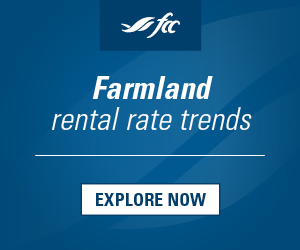Future of Grain
HIGHLIGHTING THE LATEST TECHNOLOGY IN GRAIN PRODUCTION AND UTILIZATION
Investing in soils for a sustainable future
“Our soil is a great resource, and we need to change our vision of how we manage it.” This is one conclusion from a roundtable held by Gord Miller, the Environmental Commissioner of Ontario, which brought together experts and stakeholders to discuss the opportunities and challenges of increasing soil carbon and building healthy soils.
The report from the event, “Investing in Soils for a Sustainable Future,” released at the end of March, outlines the great potential in increasing the carbon content of our soils.
“Farmers are vulnerable to climate change,” said the Commissioner, “but they are not helpless. As one roundtable participant put it: agriculture is 10 percent of the problem, but 20 percent of the solution. These numbers may be rough approximations, but they convey an important truth: there is much that farmers can do to both mitigate climate change and to adapt to it.”
Through the careful management of soil alone – by raising the organic-matter level in soils – farmers can help mitigate future climate change and adapt to change happening already, while at the same time cleaning water, guarding biodiversity, and ensuring productive farmland for future generations.
The science of good soil management, however, is evolving. Evolution means change and change means new practices, new equipment, new costs, and more risks. “Our roundtable revealed a high level of agreement that society should share these new costs and risks with farmers,” said Miller. “The important question that remains is how to go about doing that fairly and cost-effectively.”
The report summarizes the presentations made at the roundtable by a group of international experts; the discussions, prompted by these presentations, of a mix of Ontario stakeholders, including farmers, academics, and government; and
the Commissioner’s own take on the proceedings.
You can download the report and watch videos of the presentations at www.eco.on.ca. •
Who are you following?
Farmers are using Twitter to stay connected with each other and stay up to date with industry news. Each month, Ontario Grain Farmer magazine will highlight two Twitter accounts we think you should consider following.
@FarmFoodCare
Farm & Food Care is a coalition representing tens of thousands of Ontario farmers and associated businesses. On Twitter, staffers answer questions about food and farming, discuss industry trends, and post updates on events that connect farmers with consumers. They have close to 3,400 followers.
@TerryDaynard
Terry Daynard is a grain farmer near Guelph, Ontario and the former Executive VP of the Ontario Corn Producers Association. He is also a University of Guelph crop science professor and CEO of the Ontario BioAuto Council. He regular posts updates on industry issues such as GM crops and sustainability.•
The Digital Toolbox
The smartphone, tablet and computer are important tools on today’s farms. Each month, Ontario Grain Farmer magazine will highlight an app or online tool that may help you in the field or in the farm office.
m.syngenta.ca
Syngenta Canada’s mobile website has been created using responsive design technology. This means the content will automatically adjust to fit the screen of the viewing device. Growers who register for the site with their name, postal code, crop information and email address (for login purposes only), will receive customized content that is updated regularly, including: local weather, market information (including detailed futures prices for selected crops, key market indicators and the current value of the Canadian dollar), and agronomic news relevant to selected crops. Additionally, Syngenta product information (including product updates) is tailored specifically to the grower’s chosen crops, including pests controlled, application timing and rates, tank-mix compatibility and product labels. •







